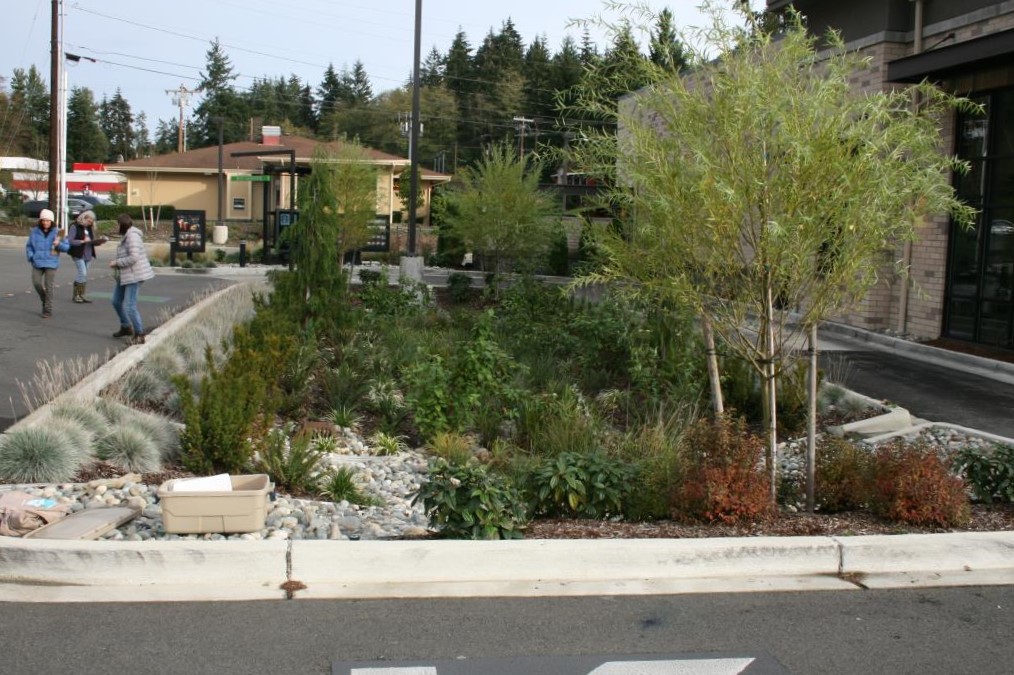
The state’s most populated cities and counties now have updated municipal stormwater permits in place. The permits include new requirements to address specific pollutants and ensure that as communities develop, change, and grow, work is being done to invest in proper stormwater management and protect water quality.
We proposed changes to the three municipal stormwater permits and related stormwater manuals in August 2023, as part of our five-year cycle for permit reissuance. As explained in our 2023 blog post, we proposed updates to a number of parts of the permit. After holding six public meetings during the three-month comment period, we have reviewed feedback received and finalized the permits. We made minor updates to the draft permits and manuals based on comments and prepared a response to comments for each permit.
The three permits cover a lot of ground – literally and figuratively! We are sharing a few highlights of how the updated permits are helping to improve water quality across Washington.
6PPD
We have made a number of updates to the permit requirements and guidance in the stormwater manuals to help address the amount of tire wear particles that enter into the stormwater system. This includes:
- Requiring more new development and redevelopment projects to incorporate Runoff Treatment and Flow Control BMPs
- Increasing the amount of stormwater retrofits for existing development
- Adding a street sweeping requirement
- Including a new emphasis on transportation-related projects in Stormwater Management Action Plans, as those are likely to generate tire particles and 6PPD-q. These plans also include planning for high priority receiving waters and identifying priority stormwater management activities.
To learn more about how the municipal stormwater permits are part of Ecology’s work to address 6PPD and 6PPD-quinone, read our focus sheet.
PCBs and PFAS
Significant national and statewide efforts are taking place to tackle PCBs and PFAS pollution. The permit updates incorporate recent guidance on how stormwater permittees can help prevent these pollutants from coming into to contact with stormwater or being discharged through municipal stormwater systems. This includes public education, source control for building washdown, and coordination on firefighting activities. The permit’s Stormwater Action Monitoring (SAM) collective is testing the potential for bioretention to reduce contaminants of emerging concern, including 6PPD-q and PFAS. In a previous SAM study, bioretention soils were found to be highly effective at removing PCBs from stormwater. To learn more about efforts to address these chemicals visit Ecology’s webpages: PFAS webpage and PCBs webpage.
Tree Canopy
Trees are an integral part of healthy watersheds. Their many benefits include reducing stormwater volumes and velocity by slowing and storing rainfall, reducing intensity of rainfall, and delaying peak stormwater runoff rates. Trees also provide additional water quality benefits such as temperature reductions.
We added a requirement that asks permittees to adopt goals and policies for tree canopy to support stormwater management that requires the consideration of maintaining or increasing canopy in overburdened communities as well as maintaining mature canopy. Permittees are required to map canopy on lands that they own.
Supporting new development and redevelopment
Including stormwater management BMPs, such as runoff treatment and flow control, in the planning for new development and redevelopment projects is the most cost effective and efficient way to manage stormwater. We made unique updates in all three permits and the manuals that will result in more stormwater treatment as communities continue to grow.
Increase stormwater retrofits for existing development
Existing development built before stormwater management requirements were in place continues to leave a legacy of pollution that impacts the state's waters. Our stormwater retrofit updates focus on the Western Washington permittees:
For Phase I permittees, we refined the requirements for retrofits formerly called Structural Stormwater Controls, with a focus on flow control, runoff treatment, and low impact development (LID) stormwater projects or substantial maintenance projects. We also incentivized watershed collaboration, benefits to overburdened communities, and projects in high pollution generating transportation areas.
Phase II Western Washington permittees now have a new program as part of their permit, Stormwater Management for Existing Development. We designed a scaled level of effort for retrofits, to address the variety of Phase II permittees: eight acres of land “managed” per 50,000 people. This program will lead to more stormwater retrofits.
To learn more about municipal stormwater permitting in Washington, visit our website or read our focus sheet.

